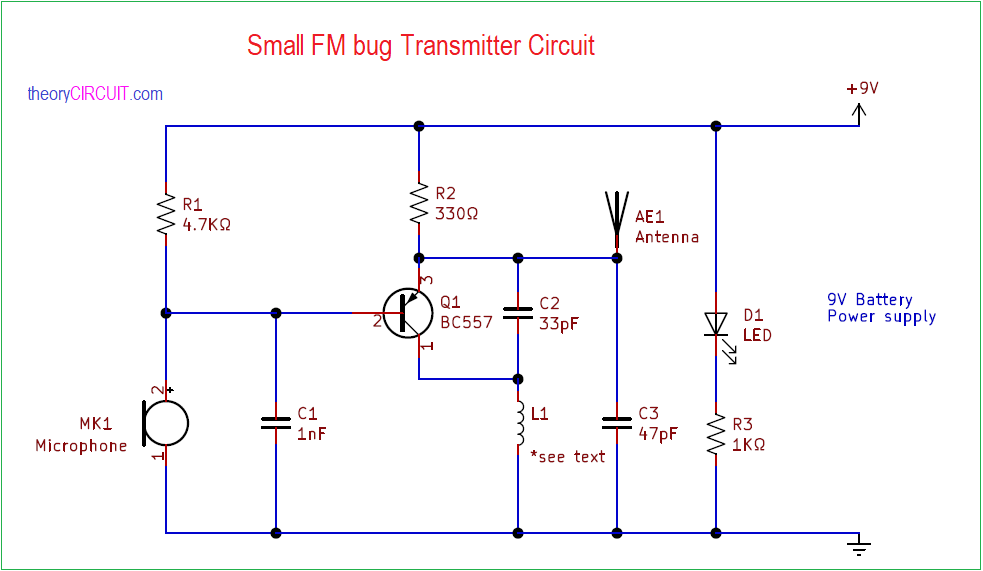Last Updated on March 16, 2024
Simple and Small FM bug Transmitter Circuit designed by using single transistor and few oscillating elements. This circuit can be constructed in small size PCB or general purpose PCB. We can use 9V battery or small voltage and package battery to power this circuit.
Unlike powerful FM (frequency modulation) transmitter, this FM bug utilize minimum power to transmit audio signal. In this circuit Condenser mic is used to pickup the audio signal and Single stranded wire is being used as antenna.
Circuit Diagram
Components Required
- Transistor BC557 (PNP)
- Condenser Microphone
- LED (Red)
- Resistor 4.7KΩ, 330Ω, 1KΩ each one
- Capacitor 1nF, 33pF, 47pF each one
- 0.5 mm enameled copper wire (for L1)
- Single stranded wire (Antenna)
Circuit Construction & Working
This Small FM bug Transmitter Circuit can transmit audio signal for up to few hundred meters. This circuit takes audio input signal from condenser mic MK1. Here condenser microphone has the ability to pick up low level sound wave also. Signal from micro phone is applied to the Q1 Transistor Base, Emitter terminal of Q1 is connected to the positive bias and antenna element. Collector terminal of Q1 is connected between the L1 and C2 components, here these tow components acts as a tank circuit and oscillates carrier signal for FM. L1 can be made from 0.5 mm enameled copper wire by making 6 to 7 turns in the diameter of normal pencil.
When the sound wave picked up by the microphone then its converted into electric audio signal and then Q1 transistor modulates that signal with carrier signal and finally transmits FM signal through Antenna. Here LED indicates the power supply presence, if you don’t need then you can remove LED from the circuit.
